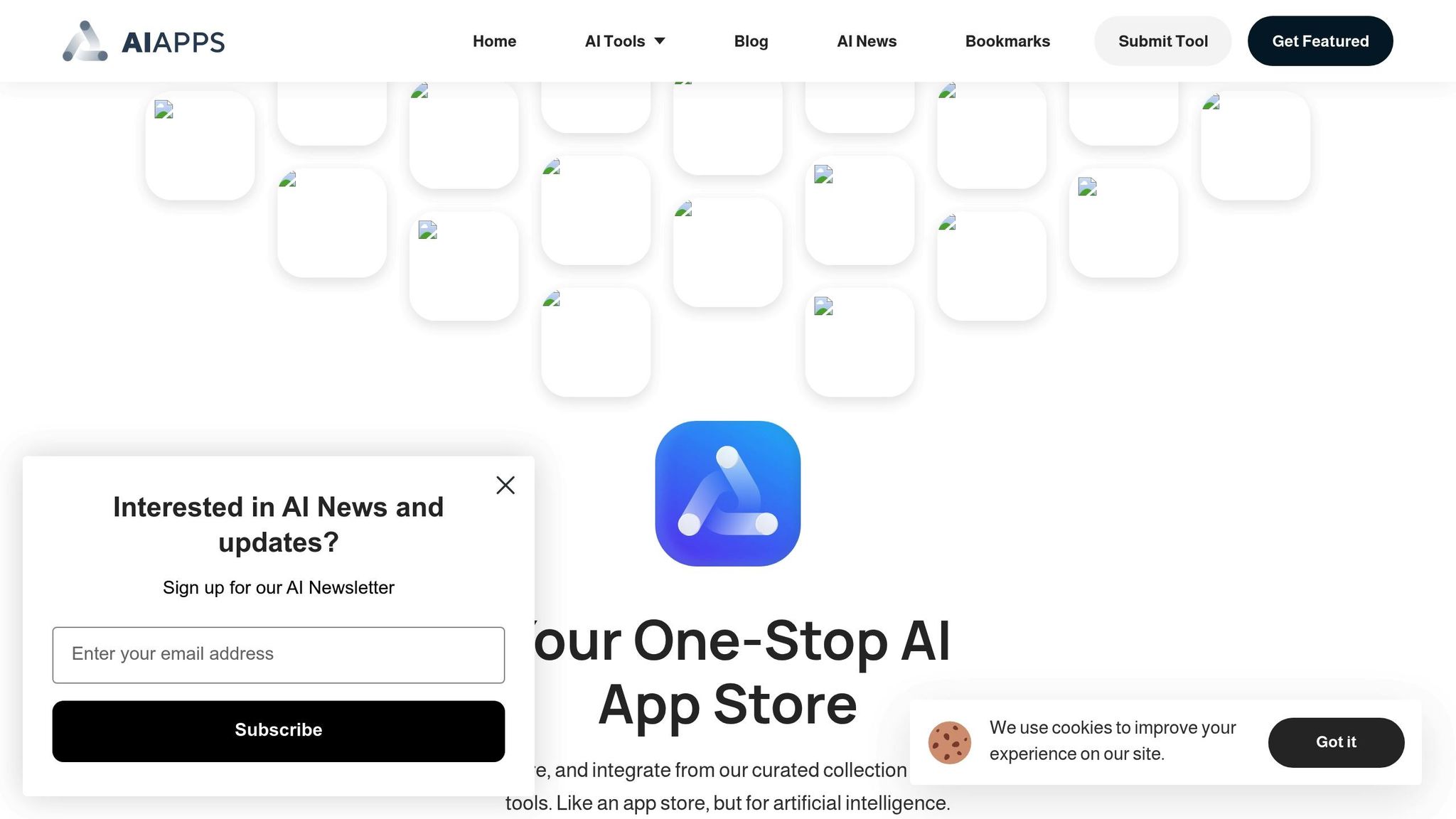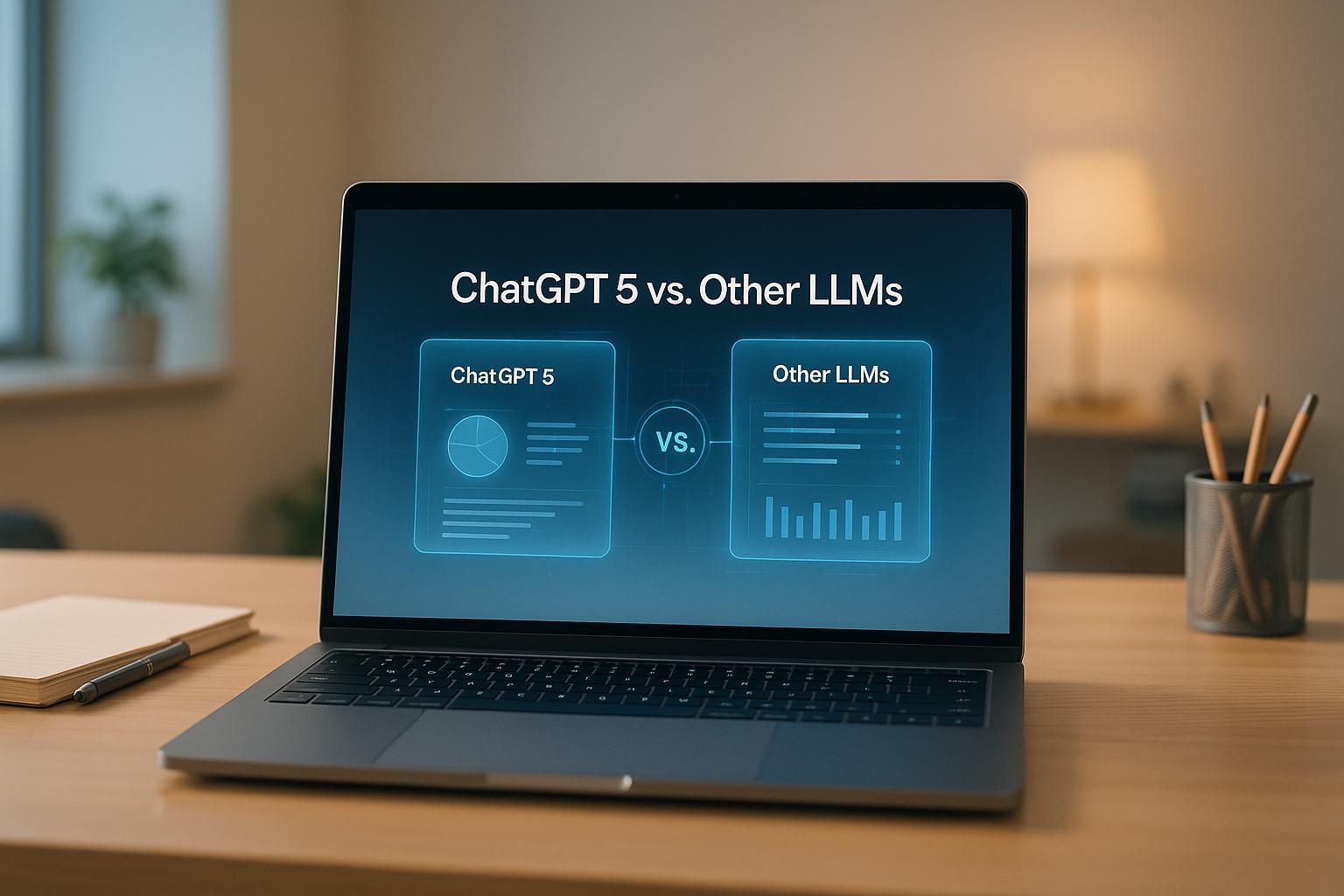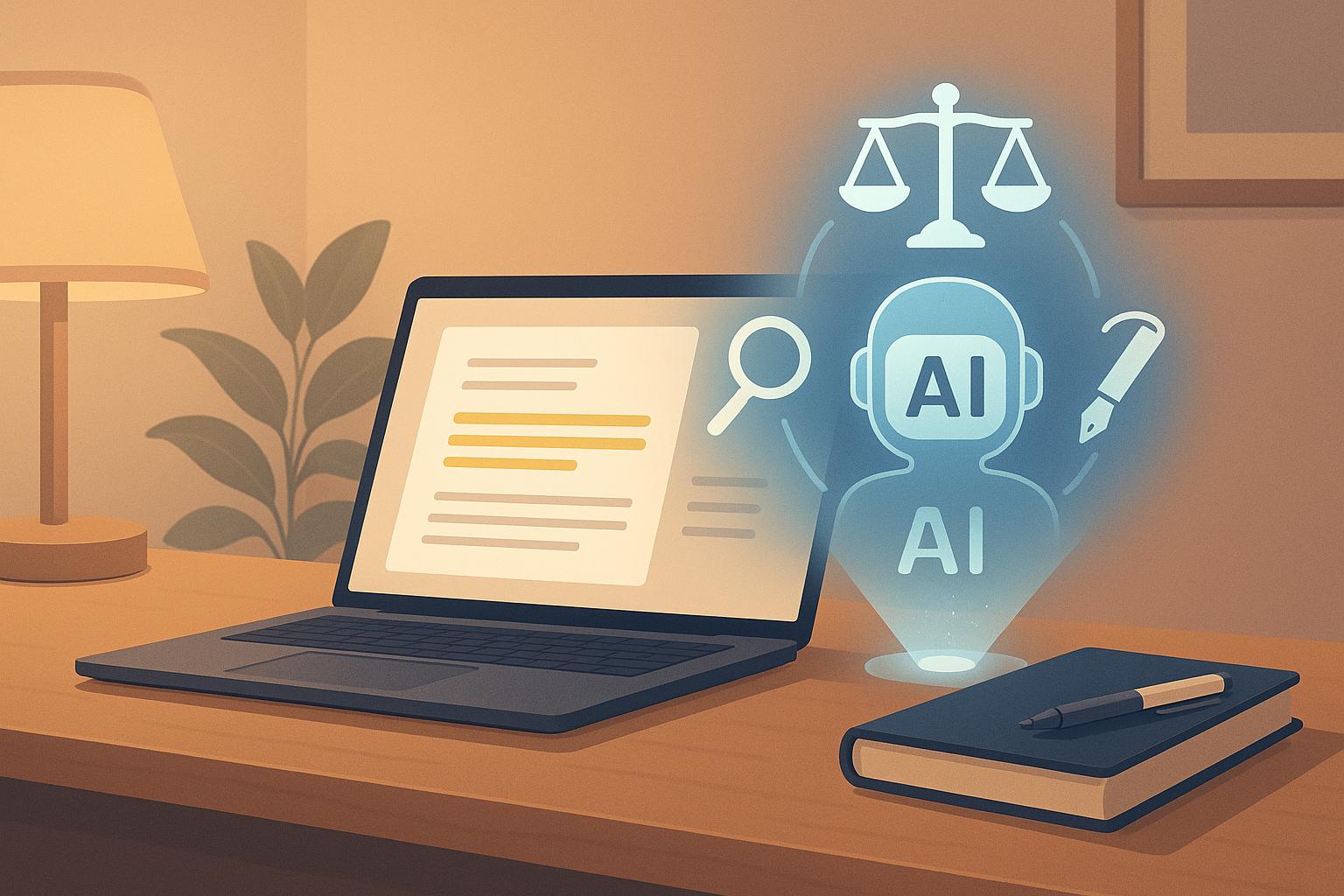AI workflow optimization uses artificial intelligence to simplify work processes, automate repetitive tasks, and improve decision-making. This is especially helpful for remote teams struggling with task coordination, communication, and productivity.
Key Takeaways:
- Task Management: AI tools prioritize and assign tasks based on skills and workload, reducing manual effort.
- Communication: AI-powered video meetings, document sharing, and automated meeting notes improve collaboration and reduce misunderstandings.
- Data Analysis: Tools like workload forecasting and performance tracking offer actionable insights to enhance team efficiency.
- Implementation: Success depends on selecting tools that fit your needs, training your team, and tracking results.
Quick Benefits:
- Save Time: Automate scheduling, task assignment, and reporting.
- Boost Productivity: Focus on high-priority tasks with fewer bottlenecks.
- Improve Collaboration: Stay connected with smarter communication tools.
- Make Better Decisions: Use AI insights to allocate resources effectively.
AI Apps provides over 1,000 verified tools to help remote teams streamline their workflows. Start by identifying your team's needs, choosing the right tools, and implementing them step-by-step for maximum results.
Revolutionizing Remote Work: Management & Automation in ...
AI Tools for Task Management
AI-driven tools make organizing and tracking tasks for remote teams more efficient. They help maintain productivity and accountability, even when team members are spread across different locations.
Task Assignment Systems
Using advanced algorithms, these systems assign tasks based on team members' skills, availability, and workload. By analyzing past performance data and current capacity, they ensure tasks are distributed fairly and efficiently.
AI Apps provides tools that can:
- Automatically prioritize tasks based on urgency and importance
- Assign tasks that align with individual expertise
- Predict and flag potential bottlenecks
- Adjust task distribution dynamically as workloads change
These features reduce the need for manual coordination while ensuring resources are used effectively. Better task assignments also lead to smoother scheduling when it comes to managing calendars.
Calendar Management
AI-powered calendar tools simplify scheduling and deadline management. They handle complexities like time zone differences, suggest meeting durations, and resolve conflicts automatically.
AI Apps' calendar tools include:
- Automated scheduling that considers time zones
- Suggestions for meeting lengths based on agenda details
- Alerts for scheduling conflicts with resolution options
- Integration with task management tools for seamless deadline tracking
These tools not only streamline scheduling but also help maintain a steady workflow by aligning deadlines with team capacity.
Performance Monitoring
AI-based monitoring tools give managers detailed insights into team productivity and project progress. They make it easier to spot issues early and act on data-driven recommendations.
Key metrics tracked include:
| Metric Type | What It Measures | Why It’s Useful |
|---|---|---|
| Velocity | Rate of task completion | Helps forecast project timelines |
| Quality | Errors and revision frequency | Highlights areas needing improvement |
| Engagement | Active hours and collaboration levels | Reflects team effectiveness |
| Efficiency | Time spent on specific tasks | Identifies workflow bottlenecks |
AI Apps offers features like:
- Real-time tracking of project milestones
- Performance reports with actionable insights
- Alerts for potential delays
- Customizable dashboards tailored to different stakeholders
Together, these tools create a system that enhances productivity and accountability across teams.
Remote Communication Tools
AI-driven communication tools are transforming how remote teams collaborate. These tools improve video meetings, document sharing, and the management of meeting notes, helping distributed groups work more efficiently and reduce misunderstandings. Let’s dive into how these tools enhance remote teamwork.
Video Meeting Tools
AI-powered video conferencing platforms are making virtual meetings more productive. Here’s what they bring to the table:
- Real-time translation for multilingual teams
- Background noise suppression to improve audio quality
- Automated transcription to capture meeting content effortlessly
- Smart scheduling that accounts for different time zones
These features make it easier to coordinate and run effective meetings.
Document Sharing
AI-enhanced document sharing tools simplify collaboration by offering smarter features for editing and organizing files. Here’s what AI Apps provides:
| Feature | Function | Benefit |
|---|---|---|
| Smart Version Control | Tracks changes and keeps document history | Prevents confusion and avoids data loss |
| Auto-formatting | Standardizes layout and styling | Ensures a polished, uniform presentation |
| Content Suggestions | Offers corrections and improvements | Improves document quality |
| Access Analytics | Tracks usage and engagement | Helps teams stay aligned and efficient |
These tools ensure your documents remain clear, organized, and easy to collaborate on, no matter where your team is located.
Meeting Notes and Tasks
AI tools for meeting notes take the hassle out of summarizing discussions and assigning tasks. Features available on the AI Apps platform include:
- Smart summarization to quickly capture key points
- Automatic action item extraction for easy task delegation
- Integration with task management systems to keep workflows seamless
These capabilities help teams stay on track and ensure nothing gets overlooked during remote meetings.
sbb-itb-212c9ea
Data Analysis Tools
Data analysis tools play a crucial role in helping remote teams make informed decisions and improve their workflows. With AI-powered solutions, teams can uncover insights that help allocate resources effectively and boost overall performance.
Workload Forecasting
AI-based workload forecasting tools analyze past data to predict:
- Resource usage across teams and projects
- Busy periods and peak activity times
- Project timelines and deadlines
- Capacity needs for future quarters
Using the AI Apps platform, teams can leverage machine learning alongside project management features to streamline resource planning.
Team Performance Analysis
AI tools provide a detailed look into team productivity and collaboration. They track essential metrics to highlight trends and identify opportunities for improvement:
| Analysis Type | Metrics Tracked | Business Impact |
|---|---|---|
| Task Productivity | Task completion rates and response times | Pinpoints peak performance hours |
| Collaboration Patterns | Frequency of cross-team communication | Improves team coordination |
| Quality Insights | Error rates and revision frequency | Enhances deliverable quality |
| Time Management | Focus periods and meeting efficiency | Refines daily scheduling |
These tools help teams understand their strengths and areas for growth, setting the stage for better planning and execution.
Data Reports and Charts
AI tools simplify complex datasets by turning them into easy-to-read visualizations. These reports help remote teams quickly grasp key trends and metrics. By integrating with task management and performance systems, they save time and improve clarity.
Key features include:
- Interactive charts for spotting patterns
- Dashboards tailored to specific roles and needs
- Automated performance data visualizations
The AI Apps platform provides specialized tools to create these reports, enabling teams to turn data into actionable insights effortlessly.
Implementation Steps
To enhance task management and communication, incorporate AI tools into your workflow using the following steps:
Tool Selection Guide
Here's a quick guide to help you choose the right tools for your workflow:
| Workflow Area | Key Considerations |
|---|---|
| Task Management | Task volume, assignment complexity, deadline tracking |
| Communication | Team size, time zones, meeting frequency |
| Data Analysis | Reporting needs, performance metrics, forecast requirements |
| Documentation | File sharing, version control, collaboration needs |
When evaluating AI tools, focus on these factors:
- Integration: Ensure compatibility with your current systems.
- Scalability: Choose tools that can grow with your team.
- Ease of Use: Opt for a user-friendly interface for quick onboarding.
- Cost Efficiency: Balance cost against potential productivity improvements.
- Security: Prioritize tools with robust security features, especially for remote teams.
Team Training Plan
A structured training plan ensures your team effectively adopts AI tools:
-
Initial Assessment
Gauge your team's technical skills and familiarity with AI tools to tailor training to their needs. -
Phased Implementation
Roll out training in stages:- Weeks 1-2: Cover the basics and core features.
- Weeks 3-4: Introduce advanced functionalities.
- Weeks 5-6: Focus on integrating tools into daily workflows.
- Weeks 7-8: Fine-tune processes and optimize usage.
-
Support System
Provide ongoing support through:- Training materials and documentation
- Regular Q&A sessions
- Peer mentoring programs
- On-demand help resources
After training, evaluate the impact and make necessary adjustments to improve workflows.
Results Tracking
Measure the success of your AI tool implementation with these metrics:
| Metric Category | Key Performance Indicators | Measurement Frequency |
|---|---|---|
| Productivity | Task completion rates, time savings | Weekly |
| Quality | Fewer errors, reduced revision requests | Bi-weekly |
| Adoption | Usage rates, feature engagement | Monthly |
| ROI | Cost savings, efficiency improvements | Quarterly |
To maximize results:
- Establish baseline metrics before starting.
- Use feedback to refine training and support.
- Update workflows as your team's skills improve.
Explore and implement the right tools through the AI Apps platform to streamline your processes effectively.
AI Apps Platform Features

AI Tools Directory
AI Apps offers remote teams access to a directory of over 1,000 AI tools, organized to simplify workflow management. These tools cover key areas of remote work, including:
| Category | Tool Types |
|---|---|
| Task Management | Project trackers, automated schedulers, workflow builders |
| Communication | Meeting assistants, transcription tools, collaboration platforms |
| Data Analysis | Performance analytics, forecasting engines, reporting systems |
| Documentation | Knowledge bases, version control, content management |
Each listing provides detailed specifications, helping teams quickly identify tools that meet their specific requirements.
Search Functions
The platform's advanced search features make it easier for remote teams to find the right tools by offering:
- Category filtering: Search tools based on specific workflow needs.
- Industry-specific options: Discover solutions tailored to your sector.
- Budget filtering: Sort by pricing models that fit your team's budget.
- Feature-based search: Narrow down tools with specific capabilities for remote operations.
These tools save time by cutting down on research and comparison, so teams can focus on using the tools effectively.
Tool Integration Process
The AI Apps platform simplifies the adoption of new AI tools for remote teams with a clear, three-step process:
1. Tool Discovery
- Explore curated categories designed for remote workflows.
- Review detailed tool specifications and requirements.
- Compare similar tools within selected categories.
2. Evaluation
- Check compatibility with your existing systems.
- Review pricing and scalability options.
- Understand integration requirements for remote use.
3. Implementation
- Access direct links to tool providers for setup.
- Follow step-by-step integration guidelines.
- Use available resources for team onboarding.
This process ensures that remote teams can quickly adopt and implement AI tools. Every tool on the platform is verified to meet quality standards, giving teams reliable solutions for improving their workflows.
Conclusion
Key Benefits Review
AI workflow optimization has brought measurable improvements to how remote teams operate. By incorporating AI tools, teams have seen noticeable enhancements in efficiency and collaboration:
| Benefit Area | Impact on Remote Teams |
|---|---|
| Task Management | Automated scheduling and tracking make task allocation easier and reduce manual effort. |
| Communication | AI-driven channels and documentation tools keep teams aligned and reduce miscommunication. |
| Data Analysis | Real-time metrics and automated reports support better, faster decision-making. |
| Resource Allocation | AI-based forecasting ensures workloads are distributed more effectively. |
Users of AI Apps' platform have noted smoother workflows thanks to centralized access to a vast library of over 1,000 verified AI tools.
With these improvements, the right strategy can help maintain and build on this success.
Next Steps
Take advantage of these improvements to advance your AI integration efforts:
-
Assessment Phase
Identify workflow challenges and determine how AI can address them. Use AI Apps' filtering tools to find solutions tailored to your team's needs. -
Tool Selection
Choose AI tools that fit seamlessly into your existing systems. AI Apps simplifies this by offering detailed specs and compatibility details for each tool. -
Implementation Strategy
Roll out AI tools in stages, focusing on:- Focused training sessions
- Clear process documentation
- Regular progress reviews
- Defined metrics to measure success



